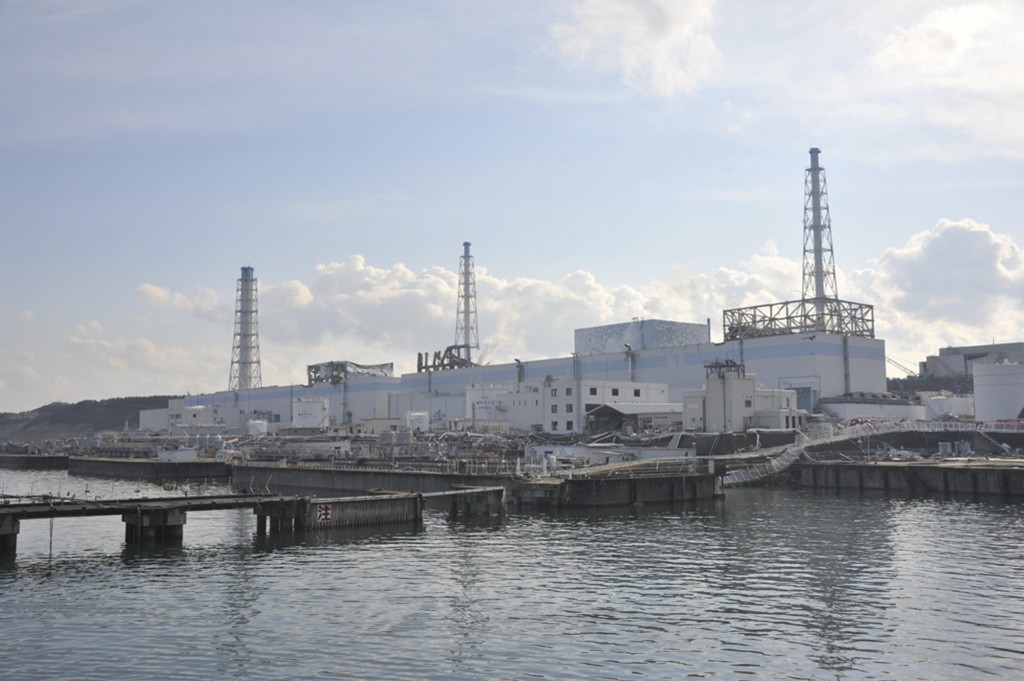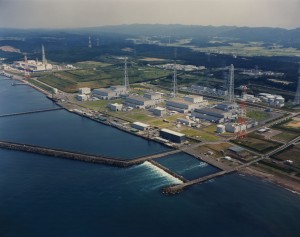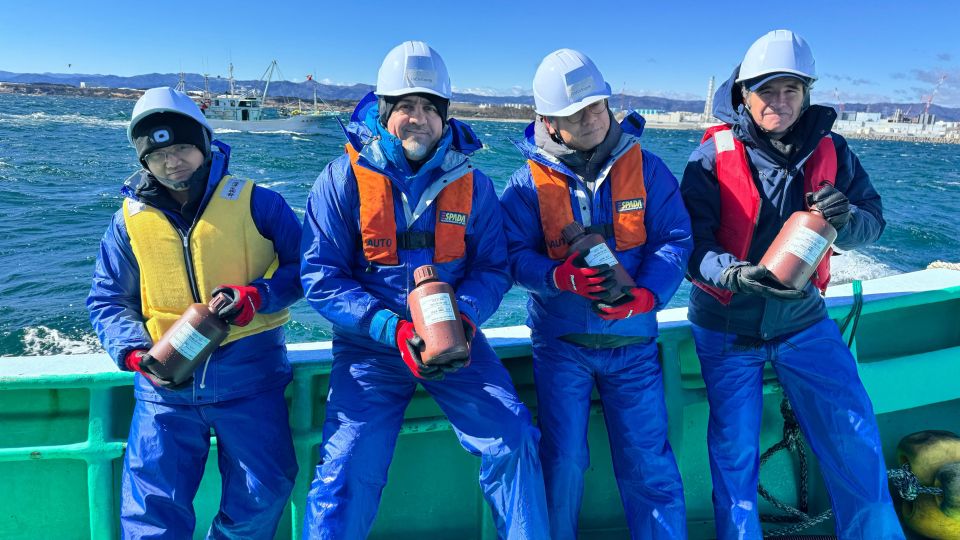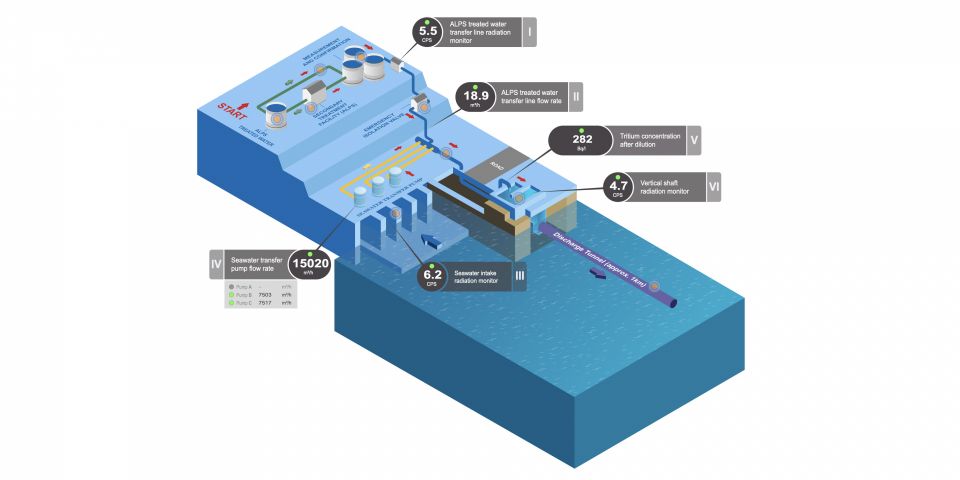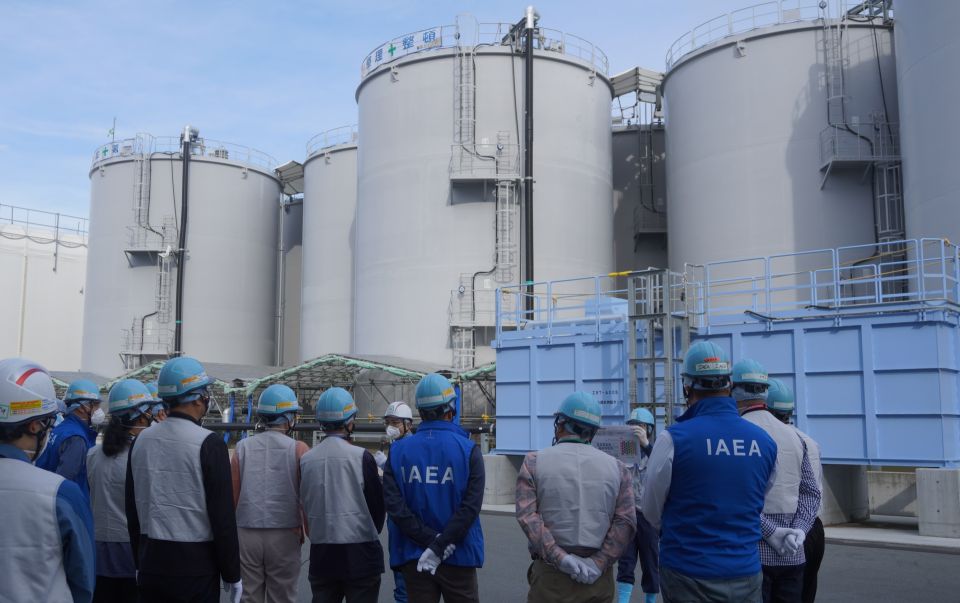Preparing to restart: Tsunami safety measures at Japanese nuclear power stations
The approach of the second anniversary of the Great East Japan Earthquake of March 2011 finds nuclear energy in Japan at a crossroads. After the quake and resulting tsunami, the nuclear plants in Japan that did not shut down immediately eventually all had to shut down for their required, scheduled outages. Political pressures, for the most part, prevented any near-term chance of any of them restarting, it seemed at the time. When Tomari Unit 3 shut down in May 2012, Japan found itself with not one single operating nuclear power plant for the first time in decades. Since that time, only two nuclear units have restarted-Ohi Units 3 and 4 in July 2012. Other plants, rumored to be "next" to start up, have still not started up, although they may soon. The question that springs to mind is naturally, "When will the majority of the plants be allowed to restart?" The more insightful question, though, is, "What will have to be done in order to allow any plant to restart?" And how can we tell which will start first-is there any clue present now? Yes, there is.
Continued debate rages about the possibility of active faults being located beneath a number of plants-perhaps the most widely discussed being Tsuruga. For the plants experiencing this problem, restart is highly problematic-and highly politically charged. For the informed, it's also no safe bet.
Other nuclear plants, however, are emerging as the "sure bets" of owner-operators who are pushing massive amounts of time, money, and material into them, preparing for restart whenever the Japanese government and the new Nuclear Regulation Authority (NRA) allows it. The sheer amount of work being put into two of these is our focus today as we look forward to the time when Japan will return to generating a fair portion of its electric power from nuclear energy.
The photograph above was taken in April 2011 by the Japanese Maritime Self Defense Force, and clearly shows the debris and tsunami damage on the sea side of Units 1 through 4 of the Fukushima Daiichi nuclear powers station. This damage-physical derangement of installed equipment, and water inundation of facilities-was the direct cause of the accident. (The tsunami was preceded by a massive earthquake that caused enormous power outages due to transmission line damage and reactor plant shutdowns, but did not lead to unusual events at the plant in and of itself.) This photo makes fairly obvious the damage, but perhaps not as obvious the height of the water to be defended against.
At right, we see Tokyo Electric Power Company's (TEOCO) Kashiwazaki-Kariwa nuclear power station. This station has for many years been the largest (highest total output) nuclear station in the world, with seven reactor plants on one site. TEPCO (also owner of Fukushima Daiichi and Fukushima Daini) has been pouring money and material into facilities on and around this site in order to prepare it for certification to start up.
It must be said right off that the most important tsunami defense this plant has is its location; it's on the opposite coast from Fukushima Daiichi and Fukushima Daini, and according to TEPCO the undersea faulting that does exist west of Japan is not thought to be able to generate tsunami at all. Even so, TEPCO has implemented massive works at the site; click on the following link to see a detailed video of the size and scope of the project. (The videos linked in this ANS Nuclear Cafe article are detailed and impressive, and are "must see" to understand the real scope of the efforts being exerted.)
TEPCO Kashiwazaki-Kariwa Tsunami Protection Enhancements
The provision of seawall protection is fully and redundantly backed up by the protection placed around the reactor buildings in TEPCO's protection scheme; at Units 1 through 4, a large new artificial sea wall defending against even 15-meter tsunami is backed up by protection of the reactor buildings themselves by new added enclosures, also proof against 15 meters of water. All doors on the reactor buildings will be water-tight, and all openings below 15 meters will be shielded with covers to prevent water entry. On the other hand, the three newer units-Units 5, 6, and 7-already sit on higher ground and thus don't require as high of a new seawall; further, these units were built having no low openings that water may enter through below 15 meters.
Also notable in the video is the installation of fixed structure to allow portable generating and pumping equipment to supply plant cooling needs in case of long-term station blackout (SBO) and even in the event of serious damage to the site. The portable equipment is located at a high elevation near the plant; it includes mobile generating trucks (using gas turbine engines instead of diesel engines), diesel powered skid-mounted fire pumps, fire engines, and mobile units containing water-to-air heat exchangers. According to TEPCO, the SBO/loss of ultimate heat sink survival time for this site after an earthquake and tsunami is said to be 196 days as a result of the additions and enhancements.
Construction of this new protection and provision of the new equipment is proceeding at a rapid pace; it is expected to be completed this year. A further detailed video, also well worth watching, shows more of the construction of the protection and its progress as of the middle of last year.
Tsunami Protection Enhancements at Kashiwazaki-Kariwa: Progress, June 2012
The Kasiwazaki-Kariwa station has undergone a complete stress test at Units 1 and 7 (which should cover most eventualities at other units, generally), although it seems clear now that the NRA might be inclined to develop further requirements; the final result of NRA's decision making is due mid-year. For what it is worth, TEPCO believes that the plant is also immune, after the implementation of seismic enhancements, even to very large earthquake accelerations (which is supported by the fact that none of the reports concerning Fukushima Daiichi has so far proven out any of the assertions that the quake itself led to crippling or even problematic system damage.) A TEPCO video covering the stress test can be seen here. The video describes the stress test steps clearly for anyone, even with no knowledge of nuclear energy. It is important to add though that the stress test video portion describing the spent fuel pool "cliff edge" for Unit 1 is actually describing the effect should water overflow the new, outer 15 meter tsunami sea wall and get inside the site.
Overall, the safety measures TEPCO is implementing at this plant are impressive, on a grand scale; comparatively, absolutely nothing of the sort has been done at its other undamaged nuclear power station, Fukushima Daini. This most likely reflects the Fukushima prefectural government's repeated assertions that no nuclear plant will operate in its territory ever again-dooming the four reactor plants at Fukushima Daini and the two undamaged units (Units 5 and 6) at Fukushima Daiichi. Judging all advance indications (including TEPCO's investments and the political atmosphere) if any of TEPCO's nuclear stations would ever restart, Kashiwazaki-Kariwa would be first.
Hamaoka
Whereas it's reported that TEPCO has spent as much as 70 billion Yen on enhancements at Kashiwazaki-Kariwa, Chubu Electric Power Company has spent 100 million yen at its five-reactor Hamaoka nuclear power station, and has increased the estimated total amount required to 140 billion yen. It has also pushed the expected completion of physical construction/equipment acquisition back an entire year from the originally expected date, to July 2013. This nuclear station is located on the same side of the country as Fukushima, but is well to the south.
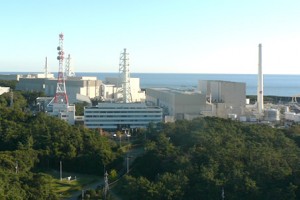 At right, Hamaoka nuclear power station, courtesy Chubu Electric Power Company. This station has five nuclear reactor plants; Units 1 and 2, nearest the right of the photo, are undergoing decommissioning, while the other three units are expected to operate in the future.
At right, Hamaoka nuclear power station, courtesy Chubu Electric Power Company. This station has five nuclear reactor plants; Units 1 and 2, nearest the right of the photo, are undergoing decommissioning, while the other three units are expected to operate in the future.
Preparations at Hamaoka, which comprise over 30 different construction projects, mirror those underway at TEPCO's plant quite closely, through the provision of sea-side protection, backup power generating, and water pumping equipment, and of course all of the training required to implement the new procedures (using new and unfamiliar equipment). As stated by Chubu, the improvements to the site were begun before a full understanding of the experience at Fukushima Daiichi was widely known. The 40-billion-yen increase in cost, to be spread over several years, comes from alterations to the protection plan that were pointed up from real experience at Fukushima. For example, the design of reactor building doors to be fitted at Hamaoka was changed to a swinging design of watertight door to reduce the time required to shut and secure the doors. It has become clear that in emergency and disaster situations, minutes and seconds count.
Chubu Electric has also produced an excellent video (also in English) quite similar to those by TEPCO, showing the enhancements specific to its Hamaoka nuclear power station site. Click here to see it. Chubu offers the public an excellent PDF file report titled "Tsunami Countermeasures at Hamaoka Nuclear Power Station" on site protection enhancements that is quite minute in detail.
In December 2012, Chubu Electric also announced additional "Severe Accident Countermeasures" to be taken at Hamaoka that are intended to do three things: prevent an uncontrolled radiological discharge (during an accident), prevent damage to the containment vessels of the reactor plants, and provide increased DC power availability. Specific actions called out included installation of filtered PCV vents, installation of water spray lines in the reactor vessel pedestals (to ensure debris retention), enhanced containment spray (to knock down airborne contamination in event of release inside containment), special cooling for the PCV head (through which it is now believed that hydrogen gas escaped into the reactor buildings at Fukushima Daiichi), provision of upgraded storage batteries, and provision of alternative (and mobile) heat exchanger equipment for core cooling. These are all enhancements directly developed as a result of accident sequence events and site complications known to have occurred during the accident progression at Fukushima Daiichi.
The plans, and the future
Parallels between the TEPCO and Chubu Electric plans are fairly obvious-both are spending large amounts of money on presently shut down nuclear stations of large generating capacity in order to help ensure that they are allowed to restart. When they do, the companies will begin to earn revenue to pay for the disaster enhancements (and, in the case of TEPCO, to pay for many other things, including decommissioning Fukushima Daiichi and, in all probability, eventually Fukushima Daini) and in addition will help restart Japan's economy. Both companies are relying on a complex mix of physical enhancements to site perimeters, reactor plants, and interconnecting infrastructure (such as new remote wires and pipes). Both are investing heavily in mobile equipment of many types. While the training required to integrate all of this new equipment hasn't specifically been mentioned, we know that it is exceedingly complicated and will be very time-consuming to get right. Both companies continue to conduct drills on the use of this equipment, with site-wide timed 'disaster scenarios.'
Another parallel that is important not to miss is that much of what TEPCO and Chubu Electric are doing is quite similar to the FLEX approach backed by the Nuclear Energy Institute and owner-operators in the United States.
One contrast between the Kashiwazaki-Kariwa and Hamaoka projects is that whereas the TEPCO plant, on the west coast, is being given 15m-high tsunami wall protection, Hamaoka, which is on the opposite coast, is being given 18m tsunami protection. This reflects the seismic environment of Japan, which as previously stated is much more likely to experience large tsunami on the eastern coastline of the nation.
It seems likely, given the Japanese public's new well-publicized suspicion of nuclear energy (and particularly the Japanese government interrelations with the Japanese nuclear industry), that restarting plants in Japan will only come with a solid yet transparent combination of physical site protections, emergency backup plans, solid regulation and enforcement, and divorce of the regulator from industry interests. All of these are underway now, and as we've seen, at least two of the utilities owning nuclear plants are heavily investing on a nuclear future for Japan, even if the face it presents is very largely different to that it presented to a pre-Fukushima world.
_______________________________
 Will Davis is a consultant to, and writer for, the American Nuclear Society. In addition to this, he is a contributing author for Fuel Cycle Week, and also writes his own blog Atomic Power Review. Davis is a former US Navy Reactor Operator, qualified on S8G and S5W plants.
Will Davis is a consultant to, and writer for, the American Nuclear Society. In addition to this, he is a contributing author for Fuel Cycle Week, and also writes his own blog Atomic Power Review. Davis is a former US Navy Reactor Operator, qualified on S8G and S5W plants.


